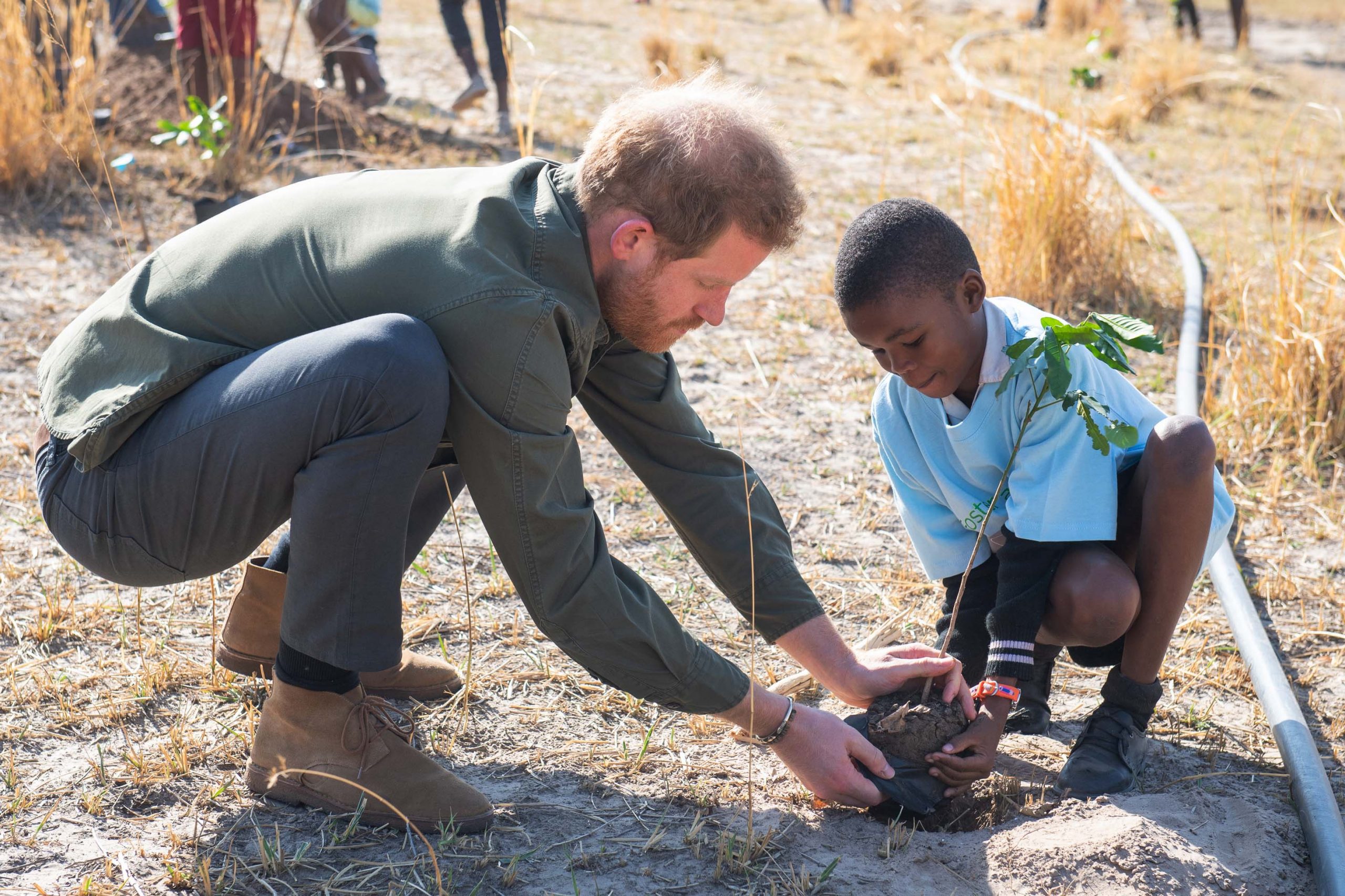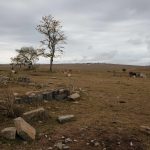Planting trees will not solve the climate crisis
South African scientists say African governments have been misled into massive tree planting schemes by the Global North misreading Africa’s grasslands. Megafires and drought beckon.
Author:
24 March 2020

Trees are good. Trees are green. Trees suck up carbon dioxide. Ergo: plant as many trees as possible and you solve the world’s environmental and climate change challenges almost overnight. Right?
Not at all, say a growing number of bewildered African ecologists. They worry that Global North-led mass tree planting projects will do very little to contain ballooning emissions of carbon dioxide and other climate-warming gases – and are more likely to ignite conflict over land tenure, food security, conservation and dwindling water resources for generations to come.
That US President Donald Trump has lent his support to mass tree planting rather than to the Paris Climate Agreement may also speak volumes.
At the World Economic Forum meeting in Davos earlier this year, Trump signed up to the one trillion tree planting initiative, declaring: “We’re committed to conserving the majesty of God’s creation and the natural beauty of our world.” He avoided any reference to climate change.
Marc Benioff, CEO of the cloud-based software company Salesforce, also pledged to plant 100 million trees, remarking: “Who’s against the trees? Everyone’s for the trees. Trees are a bipartisan issue. I haven’t met any anti-tree people yet.”
Seed bombs
Closer to home, Minister of Defence and Military Veterans Nosiviwe Mapisa-Nqakula also seems to think that trees-for-carbon plans are a great idea, so much so that she has challenged armies across the world to plant at least 75 million trees over the next year to slow global warming.
Soldiers may not even have to dig any holes, as the South African air force and army could simply bomb the country with “seed balls” (tree seeds encased in a tiny ball of fertile soil and clay).
Karishma Rajoo of the Durban-based Global Peace organisation, which is helping to spearhead the campaign, suggests that after crashing down to ground, the seed balls will take root and blossom when good rains arrive.
But several scientists across the world have voiced dismay over “quick-fix” global campaigns to cover the Earth with more carbon-absorbing trees – rather than taking firm action to chop the fossil fuel emissions that heat up the world.
Related article:
Critics include William Bond, one of the country’s best-known ecologists and former chief scientist of the South African Environmental Observation Network. Speaking at the recent Savanna Science Network meeting at Skukuza in the Kruger National Park, Bond and three fellow scientists presented a sobering critique of global tree-planting campaigns to reduce atmospheric carbon.
Bond and his colleagues – Guy Midgley and Nicola Stevens of Stellenbosch University’s department of zoology and botany, and Caroline Lehmann of the University of Edinburgh and the University of the Witwatersrand – outlined just how much land in Africa has been targeted for afforestation schemes.
The Bonn Challenge – an initiative led by the International Union for the Conservation of Nature and the German government – aims to restore forests over 3.5 million square kilometres globally by 2030. This includes about 1 million square kilometres in Africa under the African Forest Landscape Restoration Initiative (AFR100) scheme, financed by the World Bank and other donors.

To put these figures into perspective, Bond and his colleagues say that the 2030 global target covers a land mass the size of Europe’s 10 largest countries, about 45% of Australia or about 36% of the USA.
So far, 29 African nations have signed up to the AFR100 scheme, with South Africa pledging to “restore” 3.6 million hectares of degraded land. Kenya committed to restoring 5.1 million hectares. Cameroon has pledged to allocate nearly a quarter of the country to tree plantations, Nigeria about 32% and Burundi hopes to reforest a whopping 72% of its land.
Bond and his colleagues stress that they have nothing against trees per se. In fact, they strongly endorse tree planting to restore closed forests, the retention of remaining intact forests and the planting of trees in urban areas for shade and enjoyment.
Misreading African biomes
However, writing in the science journal Trends in Ecology and Evolution, they argue that several mass tree planting campaigns are based on “wrong assumptions” and simply distract global attention from the tougher business of decarbonising the world at source.
From an ecological perspective, they note that Africa is the world’s grassiest continent, supporting pastoral communities and large remaining herds of grass-dependent and sunlight-loving wildlife species.
“The tree-planting plans ignore the fate of the savanna’s current inhabitants. And they bring the risk of raging megafires as well as adversely altering stream flows. By fixing set targets by a set period, they are forcing rapid land-use change on a massive scale. It is surely time to pause and ask questions of tree planting and its consequences,” Bond suggests.
Some maps prepared in support of mass tree planting “erroneously assume that low tree cover, in climates that can support forests are ‘deforested’ and ‘degraded’. The bizarre result is that ancient savannas – including the Serengeti and Kruger National Park – are mapped as deforested and degraded (because tree cover is reduced by elephants, antelope and millions of years of grass-fuelled fires)”.
This “profound misreading of Africa’s grassy biomes” had given rise to schemes such as the Bonn Challenge and AFR100, with financial pledges of more than a billion US dollars over the next 10 years.
Related article:
“Committing such vast areas to plantations for the next century should raise many questions. An obvious one for industrial countries that are funding these projects is whether afforestation (planting new trees, rather than restoring areas known, historically, to have been closed forests) will work to cool the climate,” they say, citing several scientific reports that suggest that tree planting cannot sequester carbon at the scale needed.
Bond and his colleagues say carbon dioxide in the atmosphere is currently increasing at about 4.7 gigatonnes of carbon per year but the sums committed to tree planting amount to a small fraction of the funds needed.
“Either the funders are short changing African participants, or they do not see afforestation as a serious contributor to carbon dioxide reduction.”
Tree planting was also very land hungry – requiring between 14 million and 47 million square kilometres of tree plantations to sequester the current carbon growth rates.
“For optimistic estimates, you would need to afforest an area 53% larger than the USA or 85% of Russia. For less productive plantations, you would need upwards of one-third of the world’s land area. “
Even if Africa achieved the 100 million hectare target, current carbon growth rates would be mitigated by a mere 2.7% per year.
“If this seems very small reward for afforesting a continent, consider that the coal that drove 200 years of the industrial revolution took 400 million years to accumulate. How can we possibly expect to grow enough trees to stuff all the carbon back in again in just a few decades?”
Issues of land and water
They suggest that in the rush to launch AFR100, there had been too little time spent on exploring the social, economic and ecological costs of converting Africa’s grasslands and savannas to plantations.
“The global scale of tree planting promoted by AFR100 and similar programmes ignores local concerns over land tenure, competition with agriculture and conservation, and imposes this single dominant land use for generations to come. In trading water for carbon, it has been repeatedly shown … that replacing native grasslands with plantations reduces streamflow.”
This reduction of water flow in rivers would create critical impacts on dry-season water supply for local communities already facing water scarcity.
“Far from being deforested and degraded, Africa’s savannas and grasslands existed, alongside forests, for millions of years before humans began felling forests. A better way of supporting Africa’s transition to a future warmer world might be to promote energy-efficient cities in this rapidly urbanising continent so that Africa follows a less carbon-intensive trajectory of development than other emerging economies,” they conclude.
Drivers of the AFR100 plan, however, disagree with suggestions that the reforestation project is simply about planting more trees, as the project also included work to reverse soil erosion and desertification and to restore river catchments.
“Successful forest and landscape restoration is forward-looking and dynamic, focusing on strengthening the resilience of landscapes and creating future options to adjust and further optimise ecosystem goods and services as societal needs change or new challenges arise,” according to the AFR100 website.
Related article:
The AFR100 secretariat suggests the initiative will attempt to create a mosaic of land uses by establishing new projects on agricultural land, either through new planting or natural regeneration.
According to the World Resources Institute, vast forest areas have been cleared over recent centuries as agriculture has spread and human populations have grown.
“About 30 percent of global forest cover has been completely cleared and a further 20 percent has been degraded.”
The institute says a project to map restoration opportunities had indicated that more than two billion hectares worldwide offered opportunities for restoration – an area larger than South America.
The institute says restoration should complement and enhance food production and not cause natural forests to be converted into plantations, but University of the Free State mountain vegetation and climate-change researcher João Vidal remains sceptical about the benefits.
“This whole idea [of planting more trees across the world] gives me goosebumps. It has a northern hemisphere bias. These people don’t know what they are saying. It does not make sense,” he told researchers at the annual Conservation Symposium in KwaZulu-Natal in November.
The Department of Environment, Forestry and Fisheries has not responded to email queries on the current state of implementation of the AFR100 project in South Africa, nor whether the original proposals are being revised.



